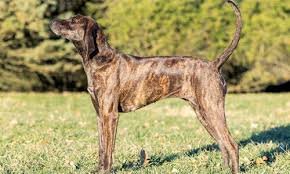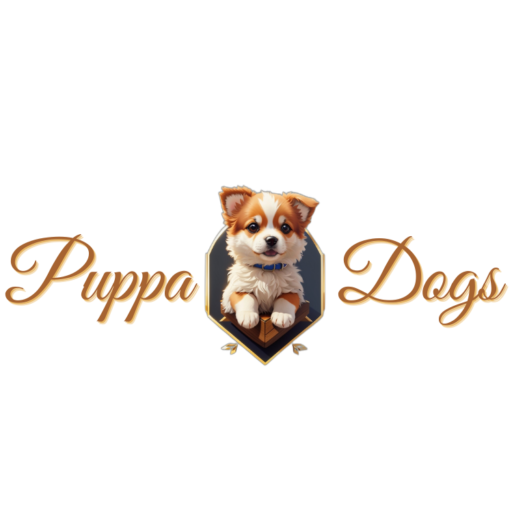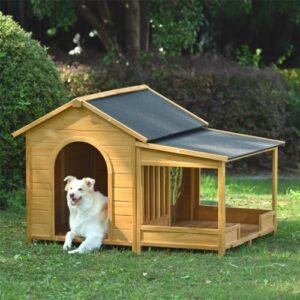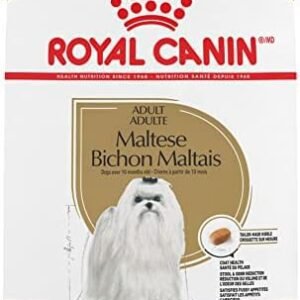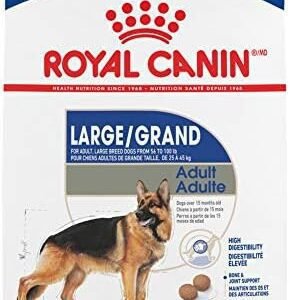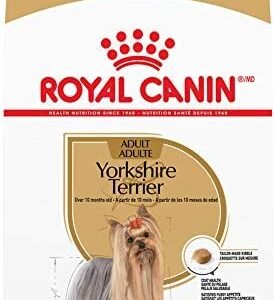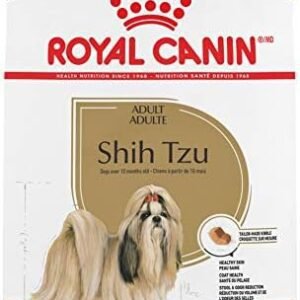Introduction
Are you a fan of seafood delicacies, particularly the delectable scallops? Those tender, succulent morsels from the ocean have long delighted human taste buds. But what about your four-legged companion? Can dogs eat scallops, or is it a culinary delight best reserved for humans? In this article, we’ll dive into the fascinating world of scallops and their compatibility with our canine friends. We’ll explore the risks and benefits, appropriate serving sizes, and what to do in case your dog indulges in these ocean treasures that are not part of their regular diet. So, let’s embark on this culinary adventure and discover if scallops can make a pet-friendly addition to your dog’s diet.

Table of Contents
Can Dogs Eat Scallops?
Scallops are a culinary delight enjoyed by many, but can our canine companions partake in this oceanic treat? In this section, we will explore the safety and nutritional aspects of feeding scallops to dogs.
Nutrition facts of Scallops
| Nutrient | Per 3 oz (85g) Serving |
|---|---|
| Calories | 90 |
| Protein | 17g |
| Fat | 1g |
| Carbohydrates | 3g |
| Dietary Fiber | 0g |
| Sugars | 0g |
| Vitamins and Minerals | |
| Vitamin B12 | 1.38 mcg |
| Vitamin B6 | 0.22 mg |
| Iron | 0.35 mg |
| Magnesium | 19 mg |
| Phosphorus | 202 mg |
Benefits of Scallops for Dogs:
Scallops offer several potential benefits when fed to dogs in moderation. Some of these advantages include:
- Protein: Scallops are protein-packed, which can support your dog’s muscle development and overall health.
- Vitamin B12: The high vitamin B12 content can contribute to better brain function and the production of red blood cells.
- Omega-3 Fatty Acids: These healthy fats in scallops may help maintain a shiny coat and reduce inflammation in dogs.
- Phosphorus: Adequate phosphorus intake is essential for bone health and energy metabolism in dogs.
Disadvantages
- Allergies: Dogs, like humans, can develop allergies to certain foods, including seafood. Before introducing scallops to your dog’s diet, conduct a small sensitivity test by offering a tiny portion and observing for any adverse reactions.
- Sodium Content: Scallops can be high in sodium, which is not suitable for dogs in excess. Too much salt can lead to sodium ion poisoning in dogs, resulting in symptoms like excessive thirst, urination, and potential sodium toxicity.
- Cooking Methods: Avoid serving scallops prepared with added seasonings, spices, or sauces. Plain, boiled, or steamed scallops are the safest option for dogs. Garlic and onion, common ingredients in some scallop recipes, can be toxic to dogs and should be avoided.
- Serving Size: While scallops can be a part of a balanced diet, they should not make up a significant portion of your dog’s daily intake. In moderation, scallops can be a healthy treat or occasional addition to your dog’s meals. The appropriate serving size varies based on your dog’s size and individual dietary requirements.
In the next section, we will delve into understanding the ideal portion sizes and the potential risks associated with feeding scallops to your dog.
How Much Scallops Can a Dog Eat?
Feeding your dog scallops can be a special treat, but it’s essential to maintain a sense of moderation to ensure their health and well-being. In this section, we will explore the appropriate serving sizes and the key factors to consider when offering scallops to your furry friend.
Emphasis on Moderation:
It can’t be stressed enough – moderation is the key when it comes to sharing scallops with your dog. While they offer nutritional benefits, treats like scallops should not account for more than a certain percentage of your dog’s daily calorie intake. Balancing your dog’s diet is crucial, and these indulgent snacks should be kept in check.Start Small and Observe:
Just like when introducing any new food to your dog, it’s wise to start with a small piece of scallop. Observe how your dog reacts to it. If they seem to enjoy it and don’t exhibit any adverse reactions, you can gradually include scallops in their diet. Remember that every dog is unique, and what works for one may not work for another.Preparation Matters:
The way you prepare scallops for your dog matters. To ensure your dog’s safety and enjoyment, you should opt for plain, unseasoned scallops. Avoid serving scallops prepared with added seasonings, spices, or sauces. These additions can contain ingredients that are not safe for dogs, such as garlic and onion, both of which are toxic. The best way to prepare scallops for your dog is by boiling or steaming them without any additional flavorings.
Consider Size and Breed:
The size and breed of your dog can affect how much scallops they can tolerate. Generally, larger dogs can handle more scallops than smaller dogs. It’s important to adjust the portion size accordingly. Smaller breeds, such as Chihuahuas or Yorkies, should be given significantly smaller portions than larger breeds like Labradors or Golden Retrievers.Appropriate Serving Sizes:
The appropriate serving size of scallops for your dog should be based on their weight and individual dietary requirements. Below, you’ll find a general guideline for offering scallops based on a dog’s weight:- Small dogs (under 20 lbs): About 1 to 2 small scallops, equivalent to 5-10% of their daily caloric intake.
- Medium dogs (20-50 lbs): 2 to 4 small scallops, equivalent to 10-15% of their daily caloric intake.
- Large dogs (50+ lbs): 4 to 6 small scallops, equivalent to 15-20% of their daily caloric intake.
It’s essential to consider these portions as part of your dog’s overall diet. If you are feeding your dog commercial dog food, you should adjust the quantity accordingly. The goal is to maintain a balanced diet and not overindulge your furry friend in scallops or any other treats.
Now that we’ve established the ideal serving sizes for scallops, the next section will dive into the potential risks associated with feeding scallops to your dog.
Risks of Feeding Scallops to Dogs
As much as scallops can be a delectable and nutritious treat for your canine companion, it’s crucial to be aware of the potential risks involved in feeding them to dogs. In this section, we will discuss the various risks and issues associated with offering scallops to your furry friend and how to recognize potential problems.
Food Allergies in Dogs:
Food allergies can affect dogs just like humans. While it’s not common, some dogs may be allergic to certain foods, including scallops. Allergic reactions in dogs can manifest in various ways, including skin issues, itching, hives, or digestive distress. If you suspect that your dog has a food allergy or you’re feeding scallops for the first time, it’s advisable to consult your veterinarian before proceeding.Short-Term Signs of Food Intolerance:
Food intolerance, as distinct from food allergies, can also occur in dogs. It typically results in short-term signs of digestive discomfort. Feeding your dog scallops may lead to gastrointestinal distress such as diarrhea, vomiting, or upset stomach. If your dog experiences any of these symptoms after consuming scallops, you should discontinue feeding them and consult your veterinarian.Potential Hazards in Scallops:
Scallops themselves are generally safe for dogs, but it’s essential to be cautious about the way they are prepared. Scallops that are seasoned with garlic, onions, or other harmful ingredients can pose severe health risks. Both garlic and onions, often used for flavoring in human cooking, are toxic to dogs and can lead to life-threatening conditions like hemolytic anemia. Therefore, only plain, unseasoned scallops should be given to dogs.
Allergic Reactions in Dogs:
Dogs can exhibit allergic reactions to scallops, much like any other food item. These reactions may involve symptoms such as itching, scratching, swelling, redness, or hives on the skin. Additionally, they might manifest as digestive issues, including diarrhea or vomiting. If you notice any of these signs after feeding your dog scallops, it’s crucial to discontinue the treat and consult with your vet.Specific Issues from Consuming Scallops:
In some cases, scallops can cause specific problems in dogs, including pancreatitis. Pancreatitis is the inflammation of the pancreas and can result from consuming rich, high-fat foods, including scallops. Dogs with pancreatitis can experience severe abdominal pain, vomiting, diarrhea, and other complications. As such, it’s essential to be aware of your dog’s sensitivity to high-fat foods and avoid scallops if they are prone to pancreatitis.Signs and Symptoms of Adverse Reactions:
To recognize adverse reactions in dogs, it’s vital to be attentive to the following signs and symptoms:
- Vomiting
- Diarrhea
- Upset stomach
- Skin itching, swelling, or hives
- Excessive scratching
- Redness or inflammation of the skin
- Lethargy
- Difficulty breathing
If you observe any of these symptoms in your dog after feeding them scallops, you should act promptly to discontinue the treat and seek veterinary advice. It’s always better to err on the side of caution when it comes to your dog’s health.
Now that you are informed about the potential risks, the next section will provide insights into how to make scallops more enjoyable for your dog and how to incorporate them into their diet safely.
How to Feed Scallops to Your Dog and Make It More Enjoyable for Them
Now that you’re familiar with the potential risks and benefits of feeding scallops to dogs, you might be wondering about the best way to serve this delightful seafood to your canine companion. In this section, we will explore various ways in which scallops can be fed to dogs and offer insights into making the experience enjoyable and safe for them.
Plain and Simple:
The safest way to feed scallops to your dog is to keep it plain and simple. Give them plain, unseasoned scallops that have been thoroughly cooked. These scallops should be free from any harmful additives or seasonings like garlic, onions, or excessive salt. Avoid pan-searing or frying the scallops in butter or oil, as this can introduce unnecessary fats and potential digestive issues for your dog.Serving Sizes:
When offering scallops to your dog, start with small serving sizes. Observing how your dog reacts to this new treat is crucial. Some dogs may have sensitive stomachs and can experience digestive distress from rich or novel foods. Therefore, it’s advisable to introduce scallops gradually, starting with a small piece and monitoring for any adverse reactions.Homemade Dog Treats:
Scallops can be incorporated into homemade dog treats or snacks. You can create nutritious treats using scallops, combining them with other dog-friendly ingredients such as sweet potatoes or peas. Be creative in the kitchen, ensuring the treats are well-balanced and free from any harmful additives.
Scallop Broth:
You can make a delicious scallop broth that can be poured over your dog’s regular food to enhance its flavor. To prepare scallop broth, boil plain scallops in water without any seasoning. Once cooked, strain the liquid and let it cool before adding it to your dog’s kibble or regular meals. The enticing aroma and taste of scallop broth can make mealtime more exciting for your pup.Scallop and Vegetable Mix:
Another way to serve scallops to your dog is by creating a scallop and vegetable mix. Cook plain scallops and combine them with dog-safe vegetables like peas, carrots, or green beans. This not only adds variety to their diet but also introduces essential nutrients from vegetables.Homemade Dog Food Recipes:
For pet owners interested in preparing homemade dog food, there are various recipes available that incorporate scallops. These recipes provide guidelines for creating well-balanced, nutritious meals using scallops, alongside other dog-friendly ingredients. When following such recipes, it’s crucial to ensure that they align with your dog’s dietary needs and restrictions.
Scallop Treats:
If you enjoy baking for your furry friend, consider making homemade scallop treats. Scallop treats can be a rewarding way to bond with your dog and offer them a tasty, nutritious snack. Here’s a simple recipe to create scallop dog treats:Scallop Dog Treats Recipe:
Ingredients:- 1 cup plain cooked scallops (finely chopped)
- 1 cup whole wheat flour
- 1 egg
- 1/2 cup oatmeal
- 1/4 cup water
Instructions:
- Preheat your oven to 350°F (175°C) and line a baking sheet with parchment paper.
- In a mixing bowl, combine the chopped scallops, whole wheat flour, egg, and oatmeal.
- Gradually add water to form a dough.
- Roll out the dough on a floured surface to a thickness of about 1/4 inch.
- Use cookie cutters to create shapes or simply cut the dough into squares.
- Place the treats on the prepared baking sheet.
- Bake for approximately 20-25 minutes or until the treats are golden brown and firm.
- Allow the treats to cool before offering them to your dog.
Remember that these treats should be offered in moderation and should complement your dog’s regular diet. Always consult your veterinarian if you’re uncertain about the suitability of any treat for your dog, especially if they have specific dietary requirements or allergies.
In the following section, we will address common questions and concerns about feeding scallops to dogs.
10 FAQs About Dogs Eating Scallops
Are scallops safe for dogs?Scallops are generally safe for dogs when prepared and served correctly. Plain, unseasoned scallops that are thoroughly cooked can be a tasty treat for your furry friend. However, as with any new food, moderation is key.
Are raw scallops safe for dogs?Raw scallops may contain harmful bacteria or parasites that could be harmful to dogs. It’s best to avoid feeding raw scallops to your canine companion to reduce the risk of foodborne illnesses.
What are the nutritional benefits of scallops for dogs?
Scallops are a good source of lean protein, essential amino acids, and various vitamins and minerals, including vitamin B12, zinc, and selenium. These nutrients can contribute to your dog’s overall health.
How much scallops can a dog eat?The serving size of scallops for dogs should be small, especially when introducing them for the first time. Dogs with sensitive stomachs can experience digestive distress from rich or novel foods. Start with a small piece and monitor your dog’s reaction before giving more.
Can dogs eat seared scallops?Seared scallops are often prepared with butter or oil, which can introduce unnecessary fats and seasonings. It’s best to avoid seared scallops for dogs and stick to plain, cooked scallops without any additives.
Can dogs have scallops as part of their regular diet?
While scallops can provide valuable nutrients to your dog, they should be considered an occasional treat rather than a staple in their regular diet. A well-balanced commercial dog food is designed to meet their nutritional needs.
Can dogs eat scallops with garlic or onions?Garlic and onions are toxic to dogs and should never be combined with scallops or any other food you offer to your canine friend. Make sure to keep scallops plain and free from harmful ingredients.
What is the best way to prepare scallops for dogs?The safest way to prepare scallops for dogs is to keep them plain and simple. Cook plain scallops without any seasoning, butter, or oil. Boiled or steamed scallops are an excellent choice.
What are the risks of feeding scallops to dogs?
Risks associated with feeding scallops to dogs include the potential for food allergies, gastrointestinal distress, and, in some cases, digestive upset due to the richness of scallops. Make sure to monitor your dog for any adverse reactions.
How should I introduce scallops to my dog’s diet?
When introducing scallops to your dog’s diet, start with a small piece and monitor their reaction. Observe for signs of allergies, digestive issues, or any adverse effects. If everything goes well, you can continue to include scallops in moderation.
Remember that not all dogs are the same, and individual dietary needs and sensitivities can vary. If you have concerns or questions about feeding scallops to your dog, it’s always a good idea to consult with your veterinarian. They can provide guidance based on your dog’s specific health and dietary requirements.
Conclusion
In conclusion, the question of whether dogs can eat scallops has been explored, and the verdict is clear. Yes, dogs can enjoy scallops in moderation as an occasional treat. These delectable shellfish are packed with valuable nutrients, including lean protein, essential amino acids, and various vitamins and minerals. However, it’s essential to be cautious and follow the right guidelines to ensure your dog’s safety and well-being.
As you can see, scallops can be a delicious addition to your dog’s diet, but it’s crucial to be aware of potential risks. Feeding scallops excessively or improperly may lead to gastrointestinal distress and other adverse effects. To provide a safe and enjoyable experience for your furry friend, always serve plain, well-cooked scallops without any harmful additives.
If you’re looking for alternative snacks for your dog, consider dog-friendly fruits like apples, blueberries, or watermelon. These fruits are lower in sugar and acidity than scallops and offer similar or better nutritional benefits. Just remember to remove any seeds or cores to ensure your dog’s safety.
Do you have any questions or comments about feeding scallops to your dog? Your feedback is valuable to us. Share your thoughts and experiences in the comments section below, and don’t forget to follow us on social media for more informative content about your canine companions.



